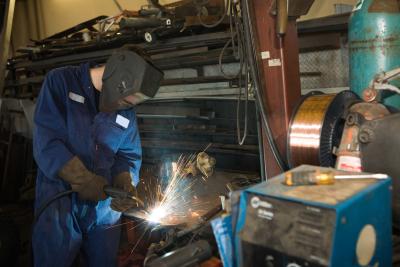
Cast iron is a very strong material and when it does become damaged it can be difficult to repair the damage. It is possible to weld repairs into cast iron but it is important to complete all of the steps necessary to prepare the cast iron to receive the repair. Consistency is important when working with cast iron as there are two common approaches to welding cast iron--either cold welding or hot welding. While both methods will work, it is important to choose one and stick with it until the repair is complete.
Preheat the damaged engine block prior to welding. If possible, heat the entire engine block to a temperature of approximately 800 degrees. Set the engine block in an area that is enclosed and free of heavy drafts to prevent the engine block from cooling too quickly. If it is not possible to heat the entire engine block, heat the area around the repair.
Set the welding torch to a low current. This will minimize the creation of additional stresses caused to the cast iron engine block during the repair.
Apply the nickel electrode and begin to fill in the crack in the engine block with a back and forth motion across the crack. Take care to make sure the nickel flows onto the cast iron at either side of the crack.
Allow the cast iron block to cool slowly once the repair is complete. If necessary, wrap the engine block in insulated blankets to slow down the cooling rate. The slower the cast iron engine block cools the lower the risk of the repair cracking and pulling away from the cast iron engine block.
Prevent the cast iron engine block from being warmer than 100 degrees Fahrenheit.
Start applying the nickel electrode at the bottom of the crack and work in an upward direction of the crack. Move the nickel electrode so that each weld bead moves in the same direction of the one before.
Allow the weld to cool slowly once the crack has been filled and the repair complete. Do not speed up the cooling process with water or pressurized air as this could cause the new weld to crack and pull away from the cast iron block.